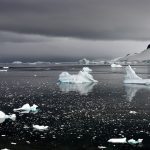 August 11, 2022 2:10 pm
Published by Climate Extremes
August 11, 2022 2:10 pm
Published by Climate Extremes
This project aims to explore the role of the MJO in modulating multi-year La Niña events.
 August 23, 2021 11:35 am
Published by Jenny Rislund
August 23, 2021 11:35 am
Published by Jenny Rislund
Hydrological impact studies analyse the effects of climate change on hydrological variables, such as changes in soil moisture, streamflow or hydrological extremes. This project aims to investigate the realised added value effect of model bias correction and downscaling methods on hydrological projections for Australia.
 August 23, 2021 8:36 am
Published by Jenny Rislund
August 23, 2021 8:36 am
Published by Jenny Rislund
This project will explore the use of supervised and unsupervised statistical learning methods (such as neural networks, random forest, clustering) to understand the impact of climate change on hydrological extremes and/or to simulate downstream impacts on affected sectors, such as agriculture, energy, transport, water resources management.
 August 23, 2021 8:24 am
Published by Jenny Rislund
August 23, 2021 8:24 am
Published by Jenny Rislund
The aim of this project is to investigate the effect of compound hot and dry events on agricultural production in Australia, and to assess the predictability of yield losses due to compound events using seasonal climate and hydrological forecasts. The outcome of the project may inform the development of seasonal forecasts of hydro-climatic risk indicators for agricultural production in Australia.
 August 18, 2021 12:06 pm
Published by Jenny Rislund
August 18, 2021 12:06 pm
Published by Jenny Rislund
In Melbourne, 50% of rainfall and 75% of extreme daily rainfall occurs on days with at least one linearly organized convective system. However, thunderstorms are often localized events, and much of the rainfall in a region falls over a short period of time. Furthermore, not all thunderstorms necessarily occur in lines, and organized storms that lead to extreme sub-daily rainfall may be different from those that lead to extreme daily rainfall. This projects aims to identify and categorize organizational structures linked with the most intense rainfalls in the region.
 August 18, 2021 11:48 am
Published by Jenny Rislund
August 18, 2021 11:48 am
Published by Jenny Rislund
In 1891, Melbourne experienced one of its worst floods on record leading to extensive damage and many deaths. But what was this wayward weather system? How often do lows from our east coast drift westward, and what are their impacts in Victoria? How many of our most significant flooding events are associated with a pattern like this? And are these systems changing over time?
 August 18, 2021 11:39 am
Published by Jenny Rislund
August 18, 2021 11:39 am
Published by Jenny Rislund
In this project you will be addressing the challenge of recurring droughts by helping us build a collection of data visualisations to tell the story of Victoria’s parched history. Your collection will help us understand these droughts were experienced by people across the state, and how our understanding of drought is changing as we move into a warmer world.
 August 18, 2021 11:27 am
Published by Jenny Rislund
August 18, 2021 11:27 am
Published by Jenny Rislund
The jet stream is a band of strong westerly winds in the upper atmosphere. Shifts in the jet are associated with shifts in the storm tracks, with associated changes in regional weather and rainfall. This project will look at methods to characterise the position and strength of the jet stream in the Southern Hemisphere, with a focus on changes in the Australian region with time.
 August 18, 2021 11:26 am
Published by Jenny Rislund
August 18, 2021 11:26 am
Published by Jenny Rislund
Ozone depletion over Antarctica from the late 1970s to 2000 has been linked to changes in the surface climate over the Southern Hemisphere in summer, among them a more positive Southern Annular Mode (SAM). Over Australian latitudes, a more positive SAM is associated with increased rainfall over eastern Australia in the summer season. Given stratospheric ozone over Antarctica is projected to recover to 1980 levels by ~2050, the impact of ozone recovery on its own would be to reduce this upward trend in summertime rainfall over eastern Australia.
 August 18, 2021 9:29 am
Published by Jenny Rislund
August 18, 2021 9:29 am
Published by Jenny Rislund
Dimethyl sulfide (DMS) is a biogenic source of sulfate aerosol that influences the climate system by reducing solar radiation and altering cloud properties. Recent observations suggest that DMS may play a dominant role in the aerosol and cloud formation along the Antarctic coast where DMS is produced by marine microbes that reside on top, in, and under sea ice. However, the role of DMS remains unclear especially over the regional scale, partly due to the lack of compilation of DMS data.










